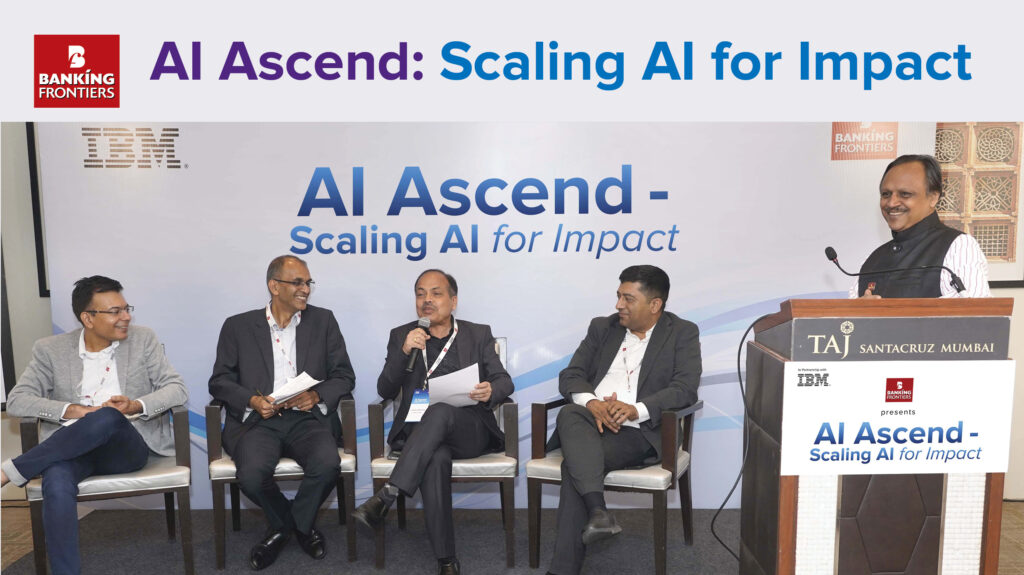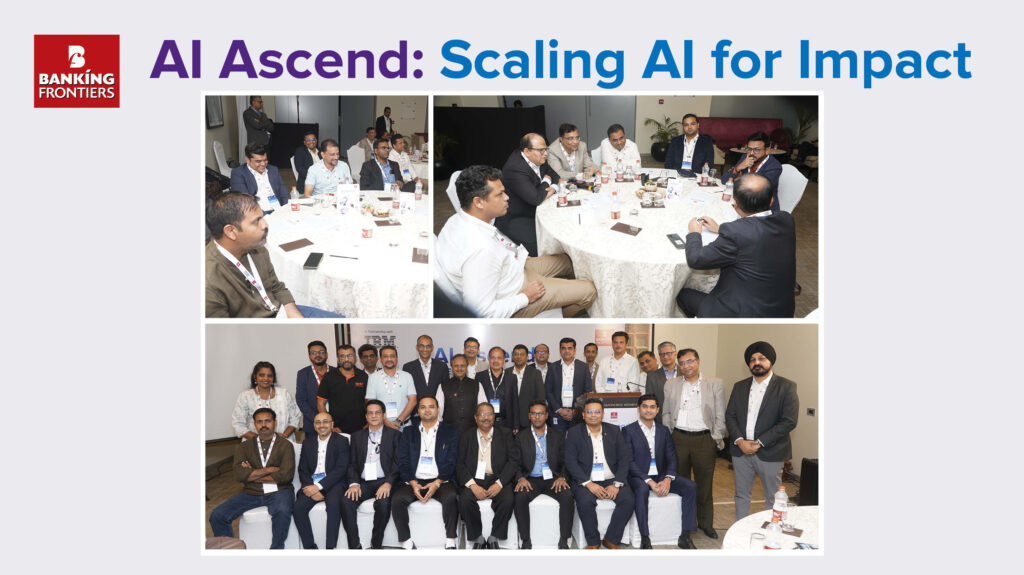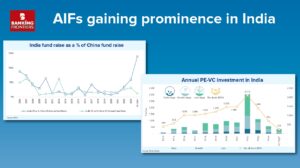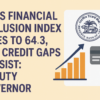
In an era defined by rapid technological evolution, artificial intelligence (AI) has emerged as a transformative force, reshaping industries and redefining the contours of our daily lives. Within the financial services sector, AI’s potential to enhance productivity, mitigate risks, and leverage data has ignited a wave of innovation. Our recent unconference, “AI Ascend: Scaling AI for Impact,” served as a crucial platform to explore this dynamic landscape, bringing together industry leaders, innovators, and experts to chart a course for the future of AI in Banking, Financial Services, and Insurance (BFSI).
The Symphony of Productivity: AI as the Conductor
Like a master conductor leading an orchestra, AI orchestrates a symphony of productivity, amplifying human capabilities and streamlining operations. Throughout history, human innovation has been synonymous with productivity enhancement. From the invention of the wheel to the advent of the internet, each breakthrough has expanded our capacity to achieve more. Today, AI stands as the next frontier, promising to revolutionize how we work and interact with the world.
At the AI Ascend: Scaling AI for Impact Unconference, hosted by Banking Frontiers in partnership with IBM, we convened distinguished industry leaders from the BFSI sector to explore the evolution of AI from pilot projects to scalable, enterprise-wide solutions. The knowledge forum was structured around three focused table discussions: AI Productivity, Risk & Compliance, and Data Readiness.
Nishant Agarwal, Head Digital Business at Kotak Securities, spearheaded the table discussion on AI-led productivity, painting a vivid picture of its practical applications. Banks like HDFC are leveraging AI-driven tools like Power BI for proactive risk management, predicting system downtimes, and mitigating potential threats. This proactive approach not only enhances operational efficiency but also safeguards customer trust.
In the realm of lending, AI is streamlining credit decision-making, automating back-office processes, and personalizing customer interactions. Imagine a scenario where AI analyzes a customer’s financial history and behavior patterns to provide personalized loan offers, reducing processing times and enhancing customer satisfaction. This level of personalization, once deemed impossible, is now a reality thanks to AI.
One particularly compelling example emerged from the gold loan sector, a segment often plagued by operational inefficiencies. By integrating AI with weighing machines and computer vision, audit processes that once consumed 15 days were reduced to a single day, dramatically improving operational efficiency. This not only saved time and resources but also enhanced the customer experience, reducing wait times and streamlining the loan process.
The discussion also addressed the challenge of sparse data, a common hurdle for many organizations. Generative AI, it was noted, can address this issue by creating synthetic data, enabling businesses to simulate scenarios and identify risks even with limited data sets. This democratizes AI adoption, making its benefits accessible to a wider range of organizations, including smaller banks and credit unions.
However, the human-machine collaboration is not without its challenges. As Manoj Agrawal pointed out, the assumption that technology invariably simplifies tasks is not always accurate. If humans are not adequately trained to utilize AI tools, efficiency can decline, and expectations may not be met. This underscores the importance of investing in training and development to ensure that employees are equipped to leverage AI effectively.
Navigating the Labyrinth of Risk: AI as the Guiding Light
While AI offers immense potential, it also introduces new risks that must be carefully managed. Ashish Chandak, an industry expert on GRC, led the discussion on risk and compliance, emphasizing the urgency of adopting AI tools to navigate this complex landscape.
The consensus was clear: the need for AI is immediate. To achieve the nation’s ambitious goals, the BFSI sector must embrace AI to enhance governance, risk management, and compliance. The customer lifecycle was identified as a crucial area where AI can play a pivotal role. From onboarding to transaction monitoring, AI can enhance security and efficiency.
Imagine a scenario where AI-driven KYC processes create trust scores, enabling organizations to prioritize resources based on risk profiles. This not only enhances security but also streamlines the onboarding process, reducing wait times and improving customer satisfaction. AI can also be used for social profiling to prevent fraud and enhance customer due diligence, ensuring that only legitimate customers are onboarded.
Transaction monitoring can be improved by reducing false positives and enhancing detection models. By analyzing transaction patterns and identifying anomalies, AI can detect fraudulent activities in real-time, preventing financial losses and safeguarding customer assets. Furthermore, AI can streamline regulatory reporting, ensuring compliance with evolving regulations.
However, the discussion also highlighted the importance of mitigating biases in AI models. If left unchecked, biases can lead to discriminatory outcomes, undermining trust and eroding customer confidence. This underscores the need for robust governance frameworks and ethical guidelines to ensure that AI is used responsibly and fairly.

Data as the Foundation
At the core of every successful AI initiative is high-quality data. As Rajesh Kumar Ram, CDO of Bank of India, aptly put it, you cannot expect sweet outcomes from poor inputs. Data readiness is paramount, as the accuracy and effectiveness of AI models whether for generative AI, analytics, or rule-based systems depend entirely on the quality of the data they are built upon.
Data governance is central to data readiness. The quality of data, often plagued by insufficiency, legacy issues, and staleness, must be addressed. In today’s fast-paced world, data staleness is a pressing concern, necessitating continuous updates and multiple data sources. Imagine a scenario where a bank leverages real-time data from various sources to provide personalized financial advice to its customers. This level of personalization and responsiveness is only possible with high-quality, up-to-date data.
The discussion also highlighted the potential of synthetic data, which can be controlled and created with time, offering a solution to data privacy concerns. However, the expectations from AI models are high, requiring data to be meticulously segregated, categorized, and structured. This underscores the need for robust data management practices and a data-driven culture.
The Convergence
To truly harness the power of AI, organizations must adopt a holistic approach that integrates productivity, risk management, and data readiness. Shamindra Basu, Partner, Generative AI at IBM Consulting, shared a compelling example of how IBM achieved a 30% reduction in its cost base through AI-driven productivity enhancements.
This ambitious goal, set by Chairman Arvind Krishnan, was achieved through a combination of cloud and AI adoption. The company mandated employee training on generative AI and implemented an Agentic AI framework to digitize and streamline HR operations. This demonstrates that for AI to be implemented successfully, the whole company must be brought into the vision and educated.
The success of IBM’s initiative underscores the importance of the human-machine interface. Organizations must ensure that their employees are well-versed in AI technologies to maximize efficiency. Imagine a scenario where employees are empowered with AI-powered tools that automate routine tasks, freeing them to focus on more strategic and creative endeavors. This level of empowerment not only enhances productivity but also fosters a culture of innovation.
Looking Ahead
The “AI Ascend: Scaling AI for Impact” unconference served as a vital platform for sharing knowledge, fostering collaboration, and charting a course for the future of AI in BFSI. Key takeaways include:
- AI as a Catalyst for Transformation: AI has the potential to revolutionize the BFSI sector, enhancing productivity, mitigating risks, and leveraging data.
- The Importance of Ethical Considerations: As AI becomes more prevalent, it is crucial to address ethical concerns, mitigate biases, and ensure data privacy.
- The Need for a Data-Driven Culture: Organizations must foster a data-driven culture, investing in data governance, quality, and readiness.
- The Power of Human-Machine Collaboration: Effective human-machine collaboration requires training, development, and a clear understanding of AI technologies.
As AI continues to transform the BFSI sector, organizations that embrace innovation, prioritize data readiness, and manage risks effectively will be well-positioned to thrive in the digital age. By fostering collaboration, investing in talent, and adhering to ethical principles, we can harness the power of AI to create a more efficient, secure, and inclusive financial ecosystem.
Recent Articles:
AIFs gaining prominence in India









